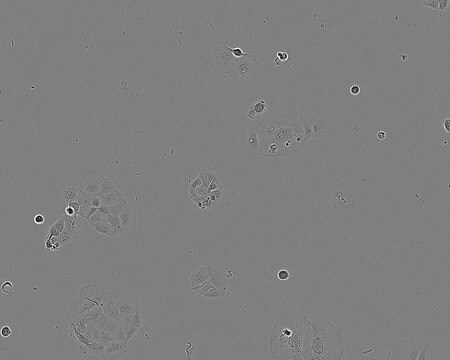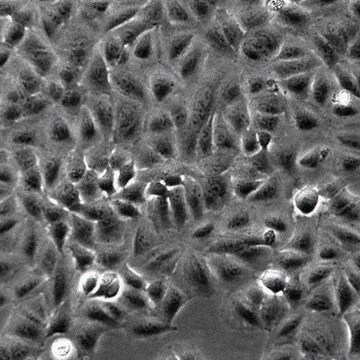CLL1222
Safe Harbor Landing Pad Cell Line HCT-116 Cancer Cells
human male colorectal tissue (Source Disease: Colorectal carcinoma)
About This Item
Empfohlene Produkte
product name
Safe Harbor Landing Pad Cell Line HCT-116 Cancer Cells,
Biologische Quelle
human male colorectal tissue (Source Disease: Colorectal carcinoma)
Qualitätsniveau
Form
frozen liquid (Vial of Frozen Cells)
Wachstumsmodus
Adherent
Methode(n)
cell culture | mammalian: suitable
Versandbedingung
dry ice
Lagertemp.
−196°C
Allgemeine Beschreibung
Beschreibung der Zelllinie
Anwendung
Leistungsmerkmale und Vorteile
Qualität
Nährmedium
Rechtliche Hinweise
Signalwort
Warning
H-Sätze
P-Sätze
Gefahreneinstufungen
Met. Corr. 1
Lagerklassenschlüssel
8A - Combustible corrosive hazardous materials
WGK
WGK 2
Flammpunkt (°F)
Not applicable
Flammpunkt (°C)
Not applicable
Analysenzertifikate (COA)
Suchen Sie nach Analysenzertifikate (COA), indem Sie die Lot-/Chargennummer des Produkts eingeben. Lot- und Chargennummern sind auf dem Produktetikett hinter den Wörtern ‘Lot’ oder ‘Batch’ (Lot oder Charge) zu finden.
Besitzen Sie dieses Produkt bereits?
In der Dokumentenbibliothek finden Sie die Dokumentation zu den Produkten, die Sie kürzlich erworben haben.
Unser Team von Wissenschaftlern verfügt über Erfahrung in allen Forschungsbereichen einschließlich Life Science, Materialwissenschaften, chemischer Synthese, Chromatographie, Analytik und vielen mehr..
Setzen Sie sich mit dem technischen Dienst in Verbindung.






